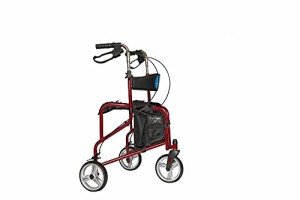walking-frame5264
walking-frame5264
What’s The Job Market For Handicap Walker Professionals Like?
Understanding Handicap Walkers: Types, Benefits, and Usage
Handicap walkers, also commonly called mobility walkers or simply walkers, serve as important aids for individuals with mobility obstacles. These devices provide physical assistance and stability, making it possible for users to stroll more confidently and independently. This short article looks into the different kinds of handicap walkers, their benefits, and important considerations when selecting one.
What is a Handicap Walker?
A handicap walker is a device created to assist individuals who have problem walking due to age, disease, or disability. Walkers help users preserve their balance, prevent falls, and recover mobility. Unlike canes, which provide very little support, handicap walkers usually provide a more comprehensive base of stability, making them appropriate for more significant mobility obstacles.
Types of Handicap Walkers
Handicap walkers can be found in numerous designs, designed to fulfill the special needs of users. Below is a breakdown of the most typical types:
| Type of Walker | Description | Suitable User |
|---|---|---|
| Standard Walker | A lightweight frame that needs raising to move. Usually has rubber ideas for traction. | Those who can lift the walker and have moderate balance problems. |
| Wheeled Walker | Features 2 wheels at the front, permitting for easier mobility without lifting. | Users who can keep stability and require more assistance while walking. |
| Rollator Walker | Comparable to wheeled walkers but consists of hand brakes and a seat for resting. | Individuals needing a portable resting option with improved mobility. |
| Bariatric Walker | Specifically developed for heavier individuals, using reinforced frames and larger hand grips. | Much heavier users requiring extra support and stability. |
| Kid Walker | Customized designs for kids to aid in their development and mobility. | Children with developmental hold-ups or mobility challenges. |
Benefits of Using a Handicap Walker
Many users discover that handicap walkers considerably enhance their lifestyle. Here are some benefits:
1. Increased Stability
Handicap walkers provide a sturdy support structure, which assists prevent falls and improves users’ self-confidence when moving.
2. Enhanced Mobility
Walkers make it much easier for individuals with mobility limitations to browse stairs, uneven surface areas, and other tough environments.
3. Independence
Utilizing a walker makes it possible for individuals to carry out daily activities individually, whether it’s walking around your house or going shopping.
4. Pain Relief
Walkers improve posture and distribute weight more uniformly, possibly relieving discomfort in joints and muscles throughout motion.
5. Social Engagement
By facilitating mobility, walkers allow users to take part more actively in gatherings, household gatherings, and community activities, fostering a sense of belonging.
Important Considerations When Choosing a Walker
Picking the best handicap walker is vital for making sure safety and comfort. Below are essential elements to consider:
-
User’s Height: Walkers can be found in different heights. It’s important to select one that permits the user to stand upright with a slight bend in the elbows when holding onto the manages.
-
Weight Capacity: Assess the weight capability of the walker, particularly for bariatric alternatives, to guarantee it suits the user’s needs.
-
Mobility: If the walker will be used regularly in various areas, consider models that can be quickly folded or transported, such as rollators.
-
Features: Some walkers include additional functions like padded seats, storage baskets, and adjustable manages. Evaluate which functions are most beneficial for the user.
-
User Preferences: The individual’s convenience and preferences must also play a substantial function in the selection. Evaluating different models may assist figure out the very best fit.
How to Use a Handicap Walker Effectively
Using a handicap walker correctly makes sure safety and maximizes its benefits. Follow these steps for safe use:

- Adjust the Height: Make sure the walker is gotten used to the right height for the user.
- Stabilize the Walker: Place the walker in front while making sure all four rubber suggestions or wheels touch with the ground.
- Use Proper Techniques: Move the walker forward about one step length, and after that enter the walker while keeping the weight balanced.
- Maintain Good Posture: Stand straight and use the walker for assistance, not leaning excessively on it.
- Practice Regularly: Encourage users to practice walking with the walker frequently, assisting to construct self-confidence and enhance balance.
Regularly Asked Questions (FAQs)
1. What is the distinction between a basic walker and a rollator?
Requirement walkers require the user to raise them with each action, while rollators have wheels and allow the user to push them forward without lifting. Rollators also typically consist of brakes and may have a seat.
2. Are handicap walkers covered by insurance?
Protection for handicap walkers can differ based upon an individual’s insurance plan. It is recommended to contact the supplier for specific details concerning coverage and any essential documentation required.
3. Can children use handicap walkers?
Yes, there are walkers created specifically for children that accommodate their developmental requirements. It’s vital to select a model that is age-appropriate and offers the needed assistance.
4. How do I keep my walker?
Frequently examine the walker for wear and tear, including the grips and wheels. Tidy the walker as required and make sure all parts are functioning effectively for safety.
5. When is it time to stop using a walker?
This differs by individual. Users ought to talk to their healthcare supplier to evaluate mobility improvements and go over whether transitioning to a various mobility aid or moving without assistance is proper.
A handicap walker can be a transformative tool for individuals with mobility obstacles, providing them greater stability, self-reliance, and improved lifestyle. By comprehending the various types, benefits, and crucial factors to consider in choosing a walker, individuals can make educated choices that align with their special needs and lifestyle. Whether for rehabilitation, aging gracefully, or handling specials needs, handicap walkers play a crucial function in promoting mobility and well-being.


